Tampa, Florida is home to a wide variety of birds. From migratory birds that travel to Tampa for the winter, to the many species of year-round residents, this city is a great place for bird watching.
Tampa’s subtropical climate and abundant wetlands provide a perfect habitat for many different species of birds. In addition to the large variety of native birds, Tampa also hosts a variety of birds from other regions of the world.
Bird watching in Tampa can be a rewarding experience for both beginning and experienced birders.
Whether you’re looking for a particular species or just want to observe the many different types of birds in the area, Tampa’s parks, refuges, and other areas provide a great opportunity to observe these feathered creatures in their natural habitat.
1. Blue Jay
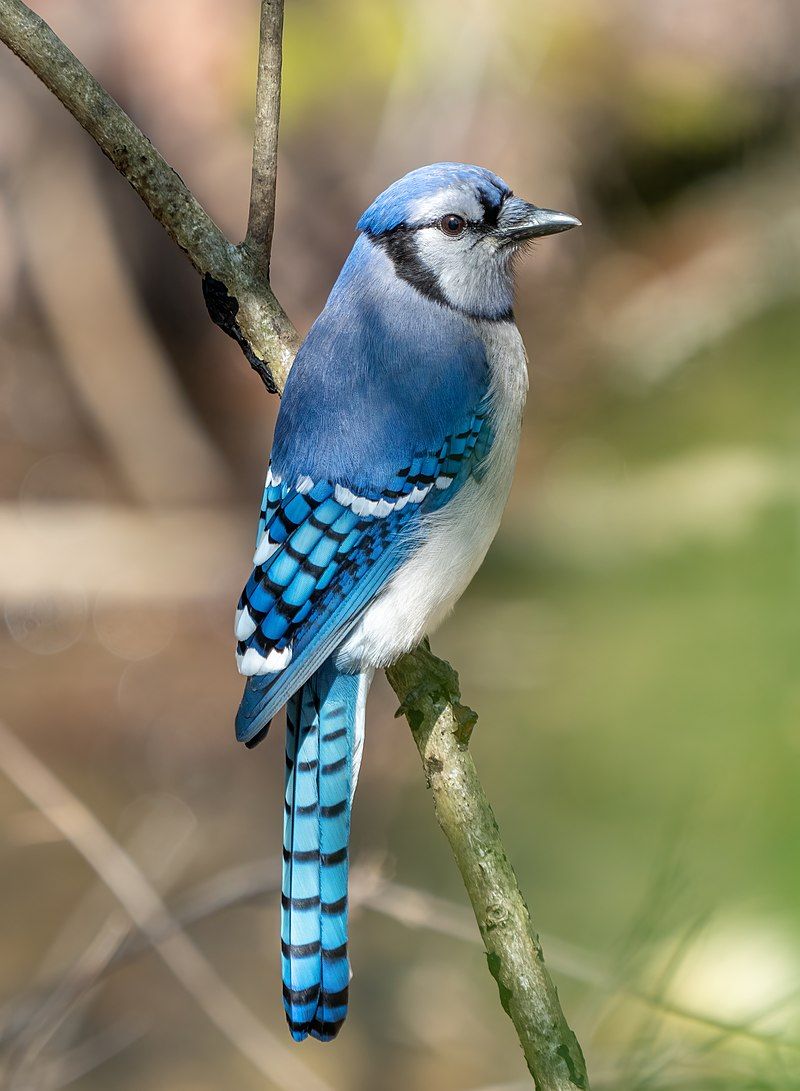
The blue jay is a type of bird belonging to the Corvidae family, which is native to the eastern parts of North America. This bird is found in most of the eastern and central parts of the United States, and some of these populations may migrate.
There are permanent populations of blue jays in Newfoundland, Canada, and they can also be found breeding in southern Canada. Blue jays are incredibly adaptable birds that can live in a variety of habitats, from woodlands to urban areas.
They have a wide variety of food sources, including seeds, nuts, fruits, insects, and even other small animals. Blue jays have a distinctive appearance, with a bright blue body, white chest, and black head and wings.
They are also quite vocal, with a variety of loud, harsh calls. Blue jays are important to the ecosystem, playing a role in seed dispersal and helping to control insect populations. They are also popular with birdwatchers and brighten up any backyard.
| Kingdom | Animalia |
| Phylum | Chordata |
| Class | Aves |
| Order | Passeriformes |
| Family | Corvidae |
| Genus | Cyanocitta |
| Species | C. cristata |
2. Great Blue Heron
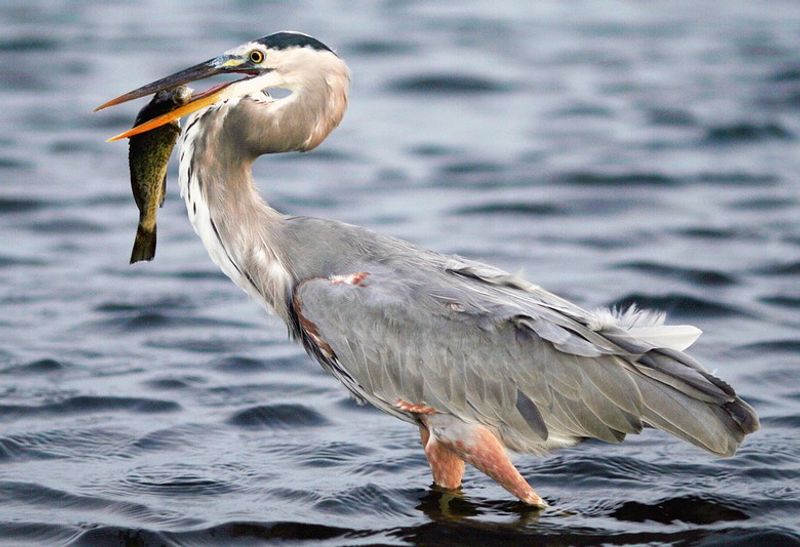
The great blue heron is an impressive creature, standing at a height of up to 4.5 feet tall with a wingspan of up to 6 feet. It is part of the heron family Ardeidae, which includes many other species of wading birds.
The great blue heron is found in many parts of North and Central America, as well as parts of South America, the Caribbean, and the Galápagos Islands. These majestic birds can often be spotted near the shorelines of large bodies of open water or in wetlands.
They are usually solitary creatures, although they can be seen in small groups during certain times of the year. The great blue heron is well-known for its long, slender neck and its grey and blue feathers.
It is a carnivore, using its pointed beak to catch fish, amphibians, insects, and other small animals. The great blue heron is a magnificent sight to behold, and it serves as an important part of many of the regions it inhabits.
| Kingdom | Animalia |
| Phylum | Chordata |
| Class | Aves |
| Order | Pelecaniformes |
| Family | Ardeidae |
| Genus | Ardea |
| Species | A. herodias |
3. Eastern Bluebird
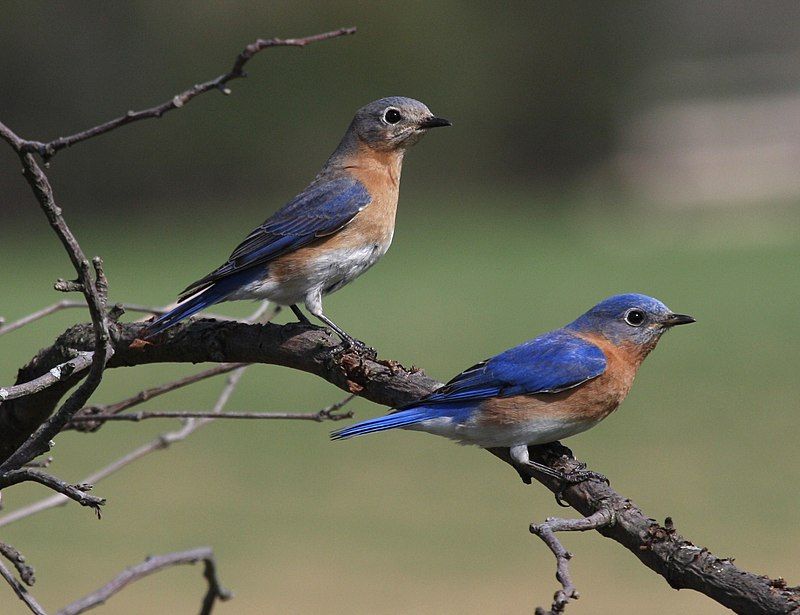
The Eastern Bluebird is a small bird native to North America. It is a migratory thrush, typically found in open woodlands, farmlands, and orchards.
The male Eastern Bluebird is easily recognizable by its bright-blue breeding plumage, which stands out when it perches on a wire or other open area. This makes it a popular bird for birdwatchers, as it is easy to spot in its natural environment.
The Eastern Bluebird is found all across North America and can be observed in most areas of the continent in the spring and summer. During the winter months, it migrates south to warmer climates.
The Eastern Bluebird is a friendly bird, and can often be seen in groups foraging for food or perched in trees. Its beautiful blue plumage and its easy-to-spot presence in open areas make it a favorite among birders.
| Kingdom | Animalia |
| Phylum | Chordata |
| Class | Aves |
| Order | Passeriformes |
| Family | Turdidae |
| Genus | Sialia |
| Species | S. sialis |
4. Roseate Spoonbill
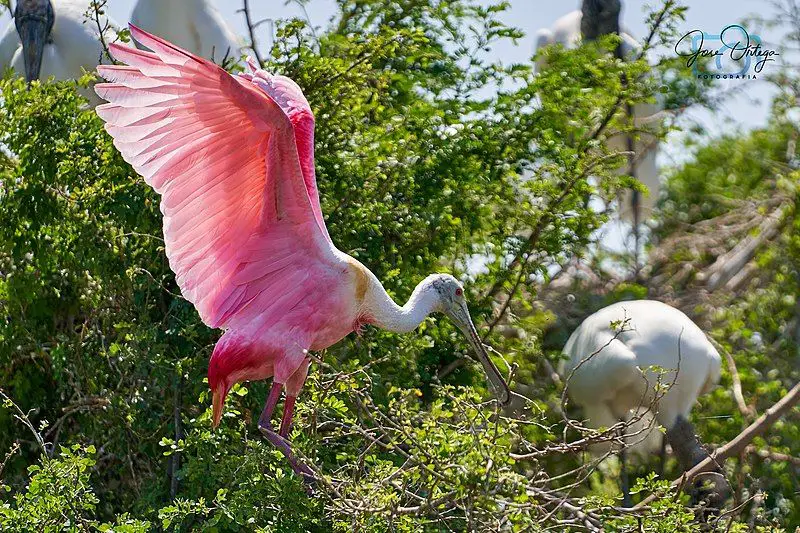
The roseate spoonbill is a species of wading bird belonging to the Threskiornithidae family, a group of birds that includes the ibis and spoonbill.
This species is found in both North and South America, where it is a resident breeder, meaning it lives in the same area year-round. The distinctive pink color of the roseate spoonbill is not a natural color but is instead derived from its diet.
This pink hue is caused by the carotenoid pigment canthaxanthin, which is also found in the American flamingo. The roseate spoonbill is a gregarious species, meaning it prefers to live in groups, and can often be found in these groups in its natural habitats.
| Kingdom | Animalia |
| Phylum | Chordata |
| Class | Aves |
| Order | Pelecaniformes |
| Family | Threskiornithidae |
| Genus | Platalea |
| Species | P. ajaja |
5. Mourning Dove
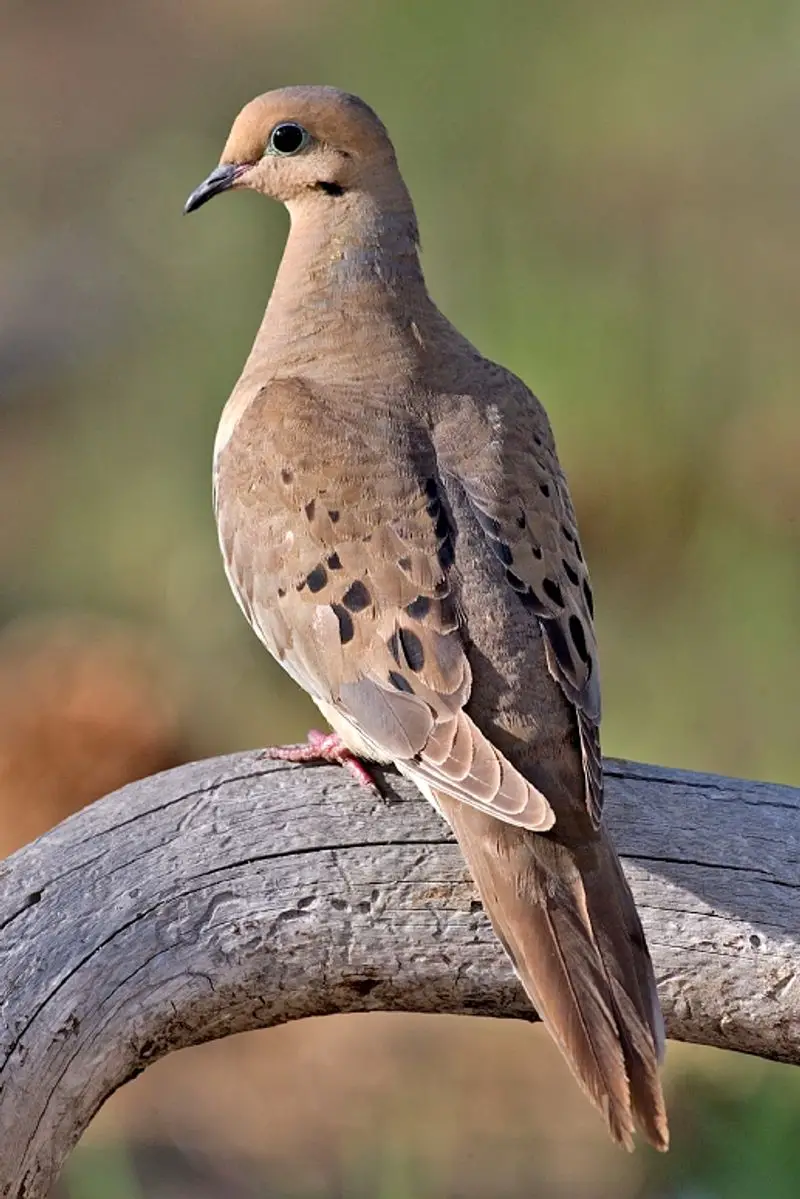
The mourning dove is a species of bird that belongs to the Columbidae family, which is commonly referred to as the Dove family. It is also known as the American mourning dove, the rain dove, and colloquially as the turtle dove.
It was also formerly known as the Carolina pigeon and Carolina turtledove. The mourning dove is a medium-sized bird which has an overall grayish-brown plumage. It has a distinctive black and white patch on the back of its neck, and its tail is tipped with white.
The mourning dove is a common bird that is found in many parts of North America. It is a ground-dwelling bird, and it is often seen in open fields, woodlands, and grasslands. The mourning dove eats mainly seeds, and it is often seen foraging for food on the ground.
It usually nests in low shrubs and trees, or on the ground. The mourning dove is a quiet and gentle bird, and its distinctive call is usually heard in the morning or evening hours.
The mourning dove is an important part of the ecosystem, as it helps disperse the seeds of many plants.
| Kingdom | Animalia |
| Phylum | Chordata |
| Class | Aves |
| Order | Columbiformes |
| Family | Columbidae |
| Genus | Zenaida |
| Species | Z. macroura |
6. Red-bellied Woodpecker
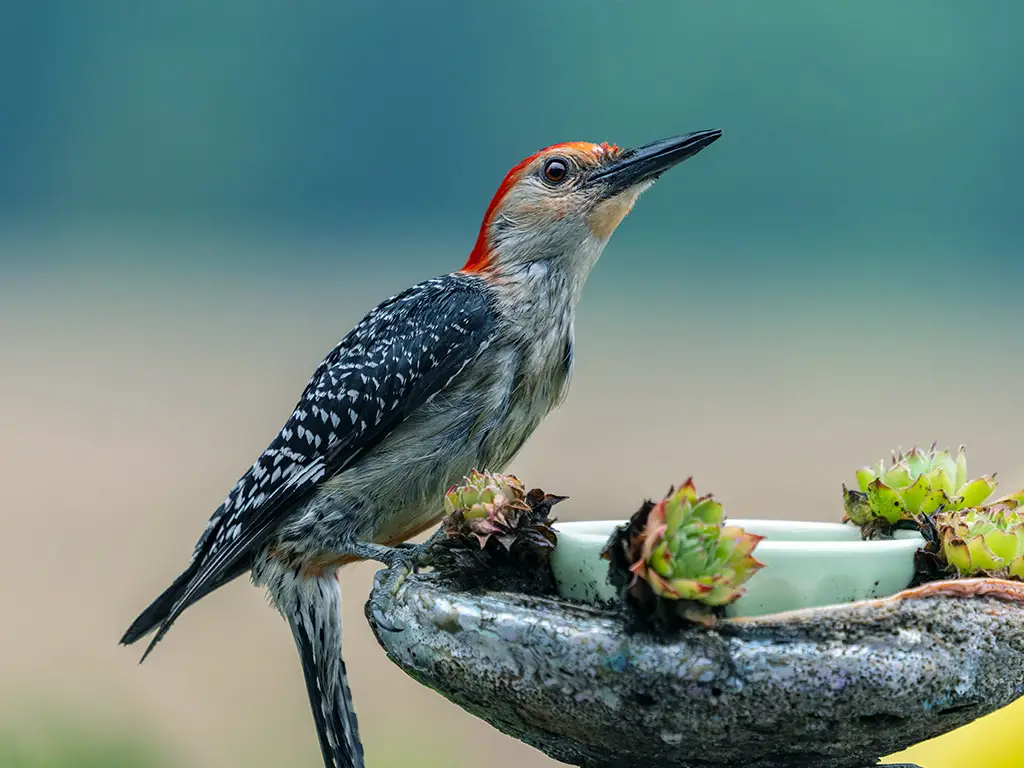
The red-bellied woodpecker is a common bird of the family Picidae, which includes all woodpeckers. It is a medium-sized bird that is native to the eastern United States and can be found as far south as Florida and as far north as Canada.
This woodpecker is easily identified by its bright red belly and black and white patterned wings. The red-bellied woodpecker is a year-round resident in the eastern US, meaning it does not migrate.
It is a common sight in open woodlands, parks, and gardens, where it can often be seen drilling into trees and searching for insects. It is primarily a tree-dweller, often nesting in cavities in dead trees or in utility poles.
It feeds mainly on ants, beetles, caterpillars, and other insects, but it will also eat berries and nuts. The red-bellied woodpecker is an important bird for the environment, as it helps control insect populations that can damage trees and crops.
It also plays an important role in the food chain, providing food for larger birds of prey like hawks and owls. The red-bellied woodpecker is also an important part of American culture, being featured in literature, art, and movies.
It is a beloved bird that is sure to remain part of our environment for years to come.
| Kingdom | Animalia |
| Phylum | Chordata |
| Class | Aves |
| Order | Piciformes |
| Family | Picidae |
| Genus | Melanerpes |
| Species | M. carolinus |
7. Northern Cardinal
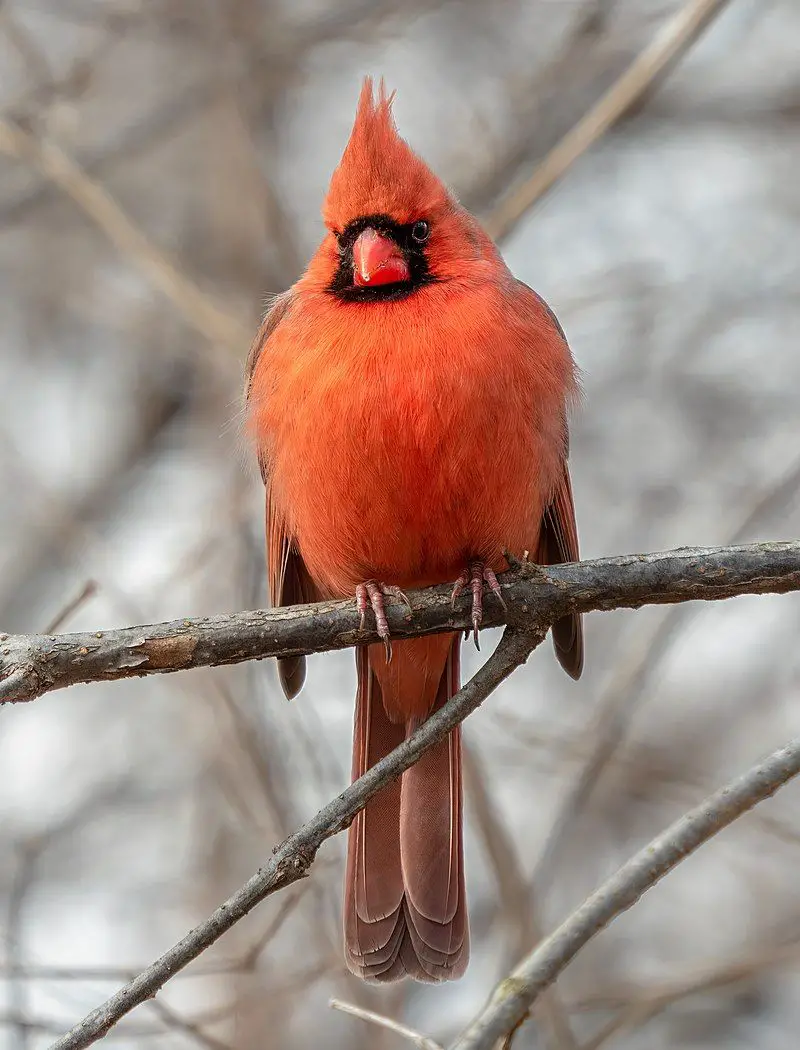
The northern cardinal, also known by a variety of other names such as the redbird, common cardinal, red cardinal, or just cardinal, is a species of bird found in the genus Cardinalis.
The northern cardinal is a brightly colored bird, with a large red crest on its head and a bright red plumage. It is usually found in woodland areas, thickets, and gardens throughout the eastern and midwestern United States, and parts of Mexico and Canada.
Cardinals are very vocal birds, producing a variety of loud calls and songs. They are also very social, often seen in pairs or small flocks and are often seen feeding together. They feed mainly on insects, fruits, and seeds.
The northern cardinal is a popular bird and is often seen in aviaries and bird feeders.
| Kingdom | Animalia |
| Phylum | Chordata |
| Class | Aves |
| Order | Passeriformes |
| Family | Cardinalidae |
| Genus | Cardinalis |
| Species | C. cardinalis |
8. Black-crowned Night Heron
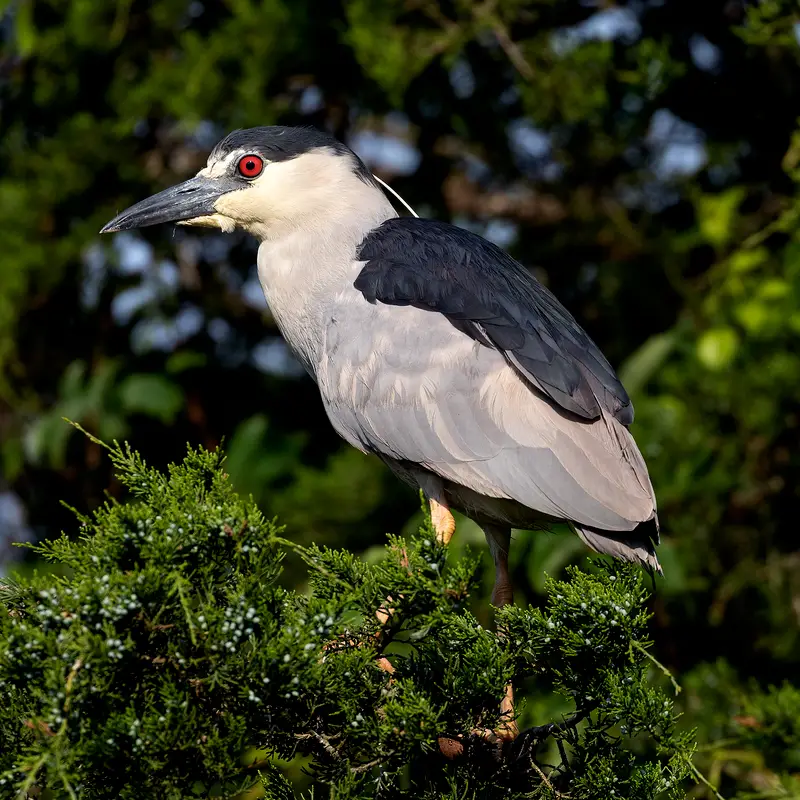
The black-crowned night-heron, also known as a black-capped night-heron, is a medium-sized bird that is found in many parts of the world.
Commonly referred to as the night-heron in Eurasia, this species is a widespread species that can be spotted in Europe, Asia, North America, and South America. The black-crowned night heron is known for its distinctive black crown, which sets it apart from other herons.
It has long legs and a slender body, and its wingspan is usually around 78 cm. Its plumage is greyish-brown, and its head is white with a black band. It has yellow eyes and a black bill. This species is mainly active at night when it hunts for prey in shallow waters.
Its diet consists mainly of fish, frogs, insects, and small mammals. It is also known to feed on birds, eggs, and carrion. As it is a solitary species, it is rarely seen in large groups.
The black-crowned night heron is an important species in many ecosystems, as it helps to keep populations of its prey species in balance. It is also an important indicator of water quality, as its presence is an indication of healthy aquatic habitats.
| Kingdom | Animalia |
| Phylum | Chordata |
| Class | Aves |
| Order | Pelecaniformes |
| Family | Ardeidae |
| Genus | Nycticorax |
| Species | N. nycticorax |
9. White Ibis
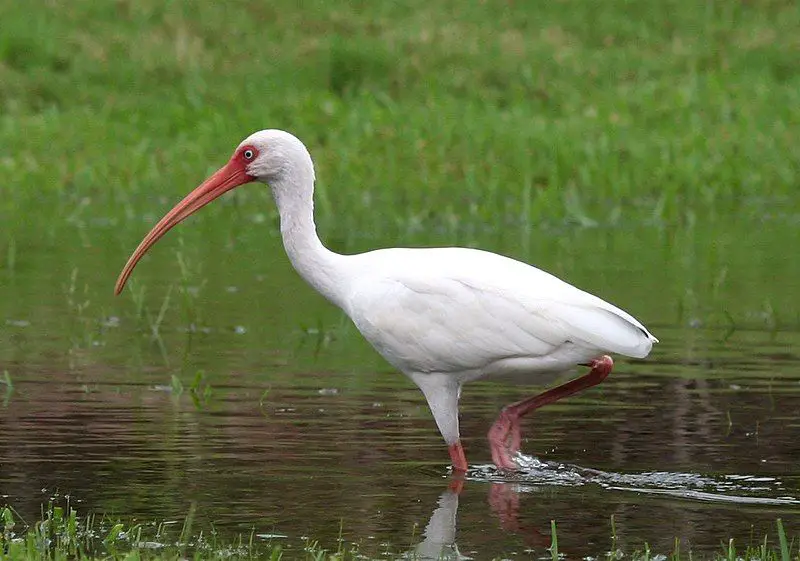
The American white ibis is a species of bird in the ibis family, Threskiornithidae. It is native to the eastern United States, where it can be found from Virginia south to the Gulf Coast.
The American white ibis is also found in the tropics of the New World, from Mexico all the way to South America. This species of ibis has a distinctive white plumage and can be seen wading in shallow waters and foraging in wet meadows.
It feeds mainly on small fish, crustaceans, and other aquatic invertebrates. The American white ibis has a wide range, and its population is currently stable.
| Kingdom | Animalia |
| Phylum | Chordata |
| Class | Aves |
| Order | Pelecaniformes |
| Family | Threskiornithidae |
| Genus | Eudocimus |
| Species | E. albus |
10. Brown Pelican
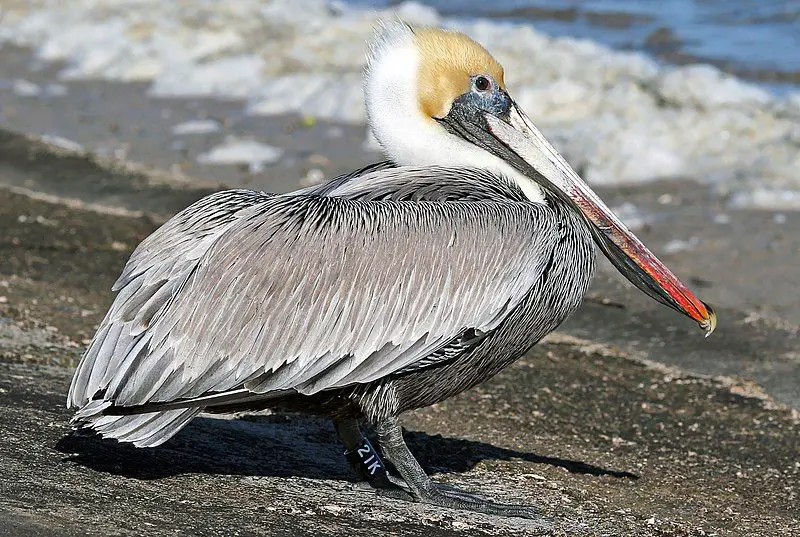
The brown pelican is a species of bird belonging to the Pelecanidae family, which includes a variety of pelican species. This particular species is found in the Americas and is one of two species of pelicans that hunt for food by diving into the water.
This type of hunting behavior is unique, as it requires the bird to plunge into the water, allowing it to capture small fish and other aquatic life. The brown pelican is an impressive bird, with its long neck and large wingspan.
Its wingspan can reach up to 7.5 feet, giving it the ability to soar through the air. Its body is predominantly brown in color, with a white underside and a yellowish head.
This bird is also a capable swimmer, with its webbed feet helping it move through the water with ease. The brown pelican is also known for its large bill, which can measure up to 12 inches long.
This bill has two elastic pouches on both sides, allowing it to scoop up fish and other aquatic life from the water.
The bird is also known for its distinctive call, which can be heard from up to a mile away. The brown pelican is a majestic bird, and its presence is an important part of the local ecosystem.
Its diet consists of small fish, crustaceans, and other aquatic life, and it plays an important role in keeping the area’s water clean and healthy. In addition, this species serves as an important source of food for other local wildlife.
| Kingdom | Animalia |
| Phylum | Chordata |
| Class | Aves |
| Order | Pelecaniformes |
| Family | Pelecanidae |
| Genus | Pelecanus |
| Species | P. occidentalis |
11. Downy Woodpecker
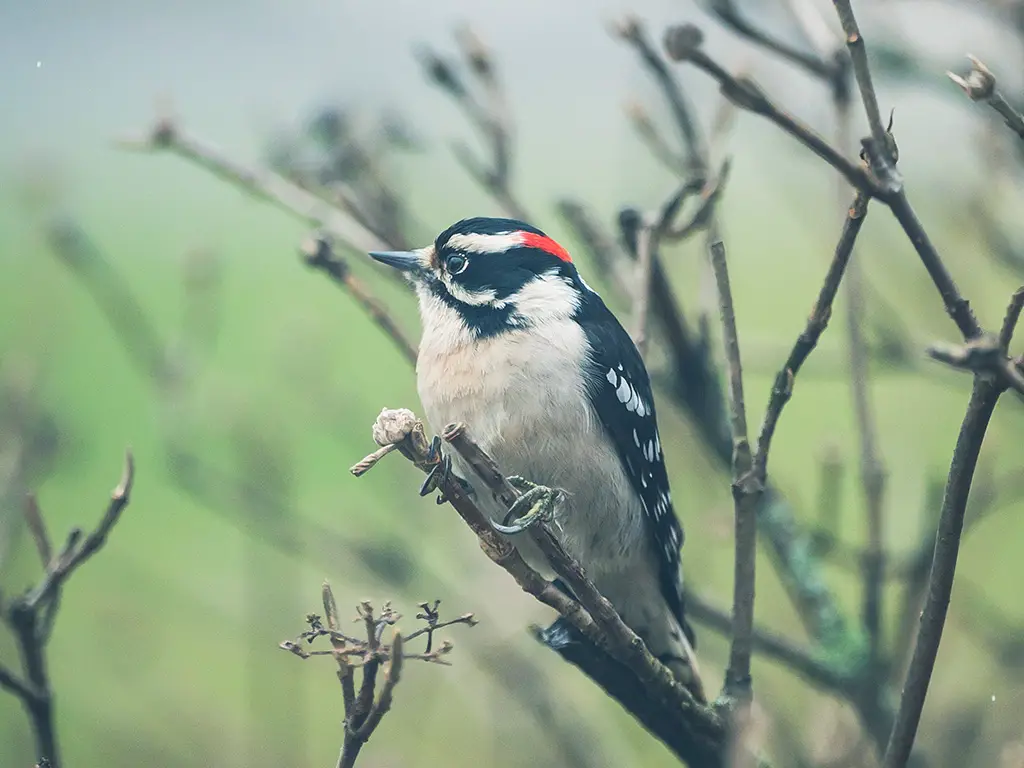
The Downy Woodpecker is a species of woodpecker native to North America and is the smallest of its kind. It measures between 14 and 18 centimeters in length and typically inhabits forested areas throughout the United States and Canada.
These woodpeckers have an exception to their range, however, and are not found in the desert regions of the southwest or the northern tundra.
Despite their small size, Downy Woodpeckers are quite hardy, and can often be seen hammering away on trees in the food search.
Their diet consists of both insects and seeds, and they have adapted to the various climates and environments in which they live. They are also known to use insects to line their nests, which they carve into the sides of trees.
The Downy Woodpecker is an important part of the North American ecosystem, and its presence has a positive effect on its environment.
| Kingdom | Animalia |
| Phylum | Chordata |
| Class | Aves |
| Order | Piciformes |
| Family | Picidae |
| Genus | Dryobates |
| Species | D. pubescens |
12. Limpkin
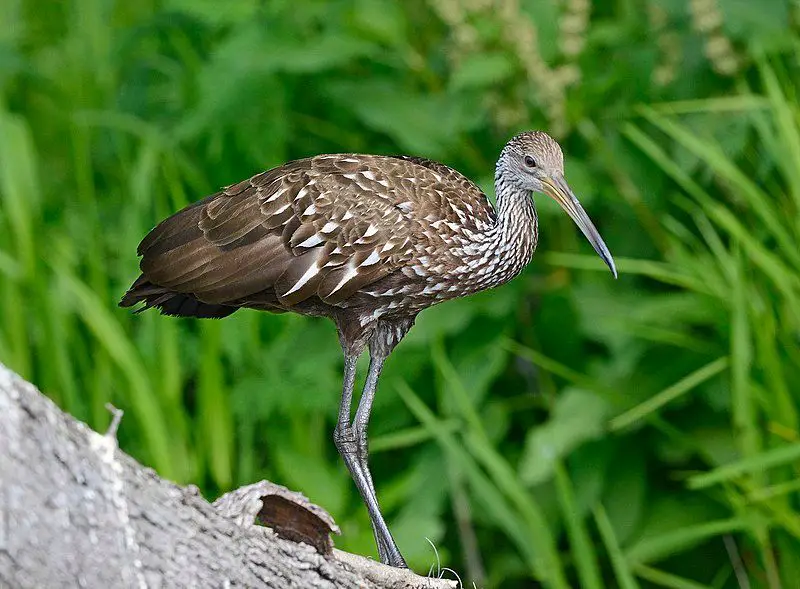
The limpkin is a unique species of bird that is found primarily in the warmer parts of the Americas. It is related to rails and cranes and is the only species of its family, Aramidae.
It is a large wading bird that is found mainly in wetlands, from Florida to northern Argentina. It has also been seen as far north as Wisconsin. This species of bird is also known as the carrao, courlan, and crying bird due to its distinctive vocalization.
The limpkin feeds primarily on apple snails, which it finds in freshwater wetlands. It has a long, downward-curved bill that is well-adapted for extracting the snails from their shells.
It is a solitary bird that is often seen standing still on the edge of a body of water, scanning for prey. The limpkin is an important species for maintaining the balance of freshwater ecosystems.
| Kingdom | Animalia |
| Phylum | Chordata |
| Class | Aves |
| Order | Gruiformes |
| Family | Aramidae |
| Genus | Aramus |
| Species | A. guarauna |
13. Carolina Wren
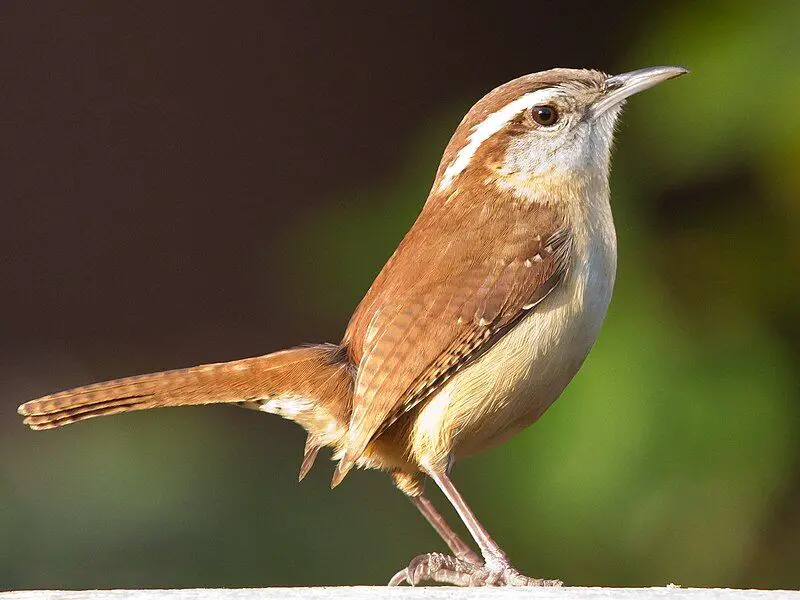
The Carolina wren is a species of wren that is found in the eastern half of the United States, as well as the extreme south of Ontario, Canada, and the extreme northeast of Mexico.
This small bird is found in a variety of habitats, from forests and woodlands to urban areas and gardens. It is a plump, brown bird with a white eyebrow and a long, curved bill. It has a loud, rich song that is often heard in the early morning.
The Carolina wren is a very adaptable species and is often seen foraging for food on the ground or in shrubs. It feeds mainly on insects, spiders, and berries, and also visits bird feeders.
This species is a common sight in many parts of its range and is considered a welcome backyard visitor.
| Kingdom | Animalia |
| Phylum | Chordata |
| Class | Aves |
| Order | Passeriformes |
| Family | Troglodytidae |
| Genus | Thryothorus |
| Species | T. ludovicianus |
14. Anhinga
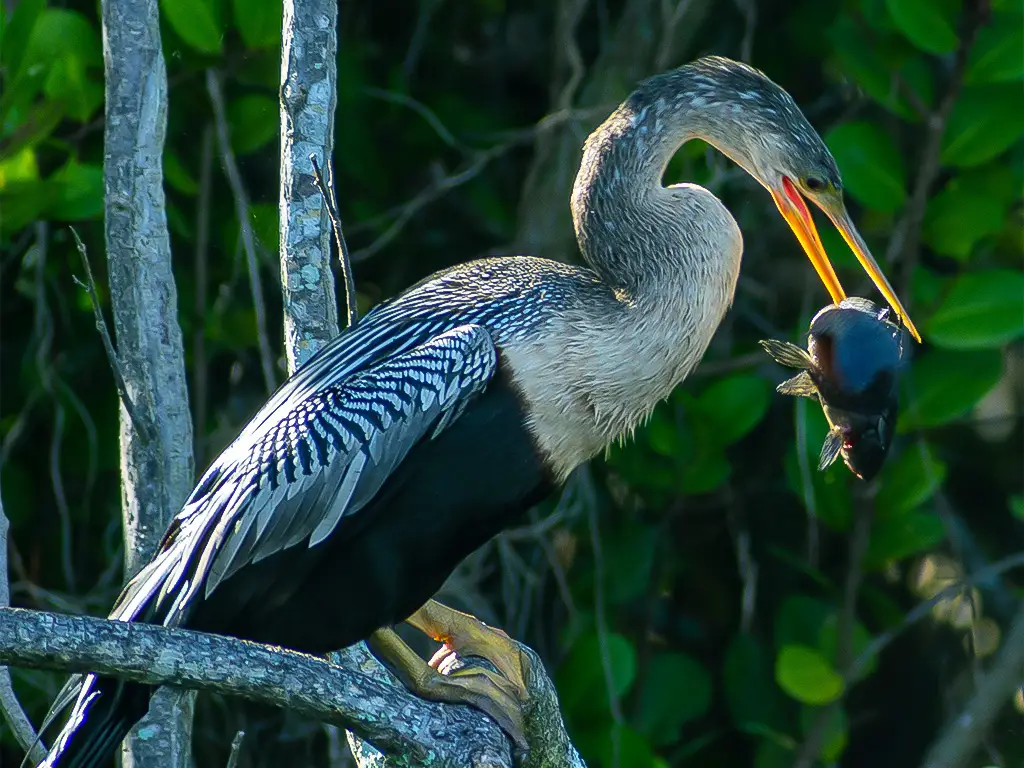
The Anhinga is a unique water bird found in the warmer parts of the Americas. It is sometimes referred to as a snakebird, darter, American darter, or water turkey. The origin of the word Anhinga is from the Brazilian Tupi language, where it is written as a’ñinga.
This translates to “devil bird” or “snake bird” which aptly describes the look of the bird. The Anhinga, as its various nicknames suggest, is a slender and long-necked bird. It has a long, pointed bill, and its feathers are dark brown or black.
It usually has a noticeable crest on its head. It is a large bird, with a wingspan of up to four feet. The Anhinga is a graceful swimmer and is often seen floating on the surface of the water. It dives underwater to hunt for fish, and its long neck helps it to spot them.
It also uses its long, pointed beak to spear its prey. The Anhinga is an omnivore, and its diet consists of fish, frogs, snakes, and small mammals. It is also known to eat insects, small crustaceans, and aquatic plants.
It is a solitary bird, and it is often seen in large groups near lakes, rivers, ponds, marshes, and swamps. The Anhinga is a fascinating bird. Its unique appearance and behavior make it an interesting sight to see.
It is an important part of the environment, helping to maintain a balanced ecosystem.
| Kingdom | Animalia |
| Phylum | Chordata |
| Class | Aves |
| Order | Suliformes |
| Family | Anhingidae |
| Genus | Anhinga |
| Species | A. anhinga |
15. Tufted Titmouse
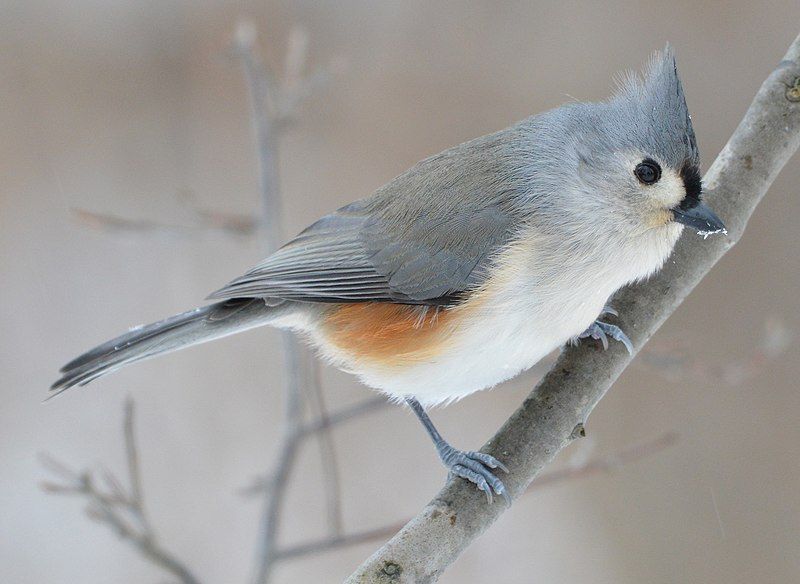
The tufted titmouse is a species of small songbird native to North America, belonging to the family of birds known as tit and chickadees. It is easily identified by its gray-brown body, white belly, and black forehead.
Its most distinctive feature is the tuft of feathers on its head, which gives the species its name. The black-crested titmouse, which is found in central and southern Texas, was originally classified as a subspecies of the tufted titmouse but is now considered a separate species, Baeolophus atricristatus.
This species is distinguished from the tufted titmouse by its black crest, which is absent in the tufted titmouse.
The black-crested titmouse also has a different song than the tufted titmouse, which is a two-note call as opposed to the tufted titmouse’s three-note call. Both species of titmouse can be found in a variety of habitats, including woodlands, open fields, gardens, cities, and suburbs.
They feed on insects, berries, and seeds, and are known for their acrobatic foraging habits. They are a popular bird to watch and are often seen in small flocks.
| Kingdom | Animalia |
| Phylum | Chordata |
| Class | Aves |
| Order | Passeriformes |
| Family | Paridae |
| Genus | Baeolophus |
| Species | B. bicolor |
16. Yellow-crowned Night Heron
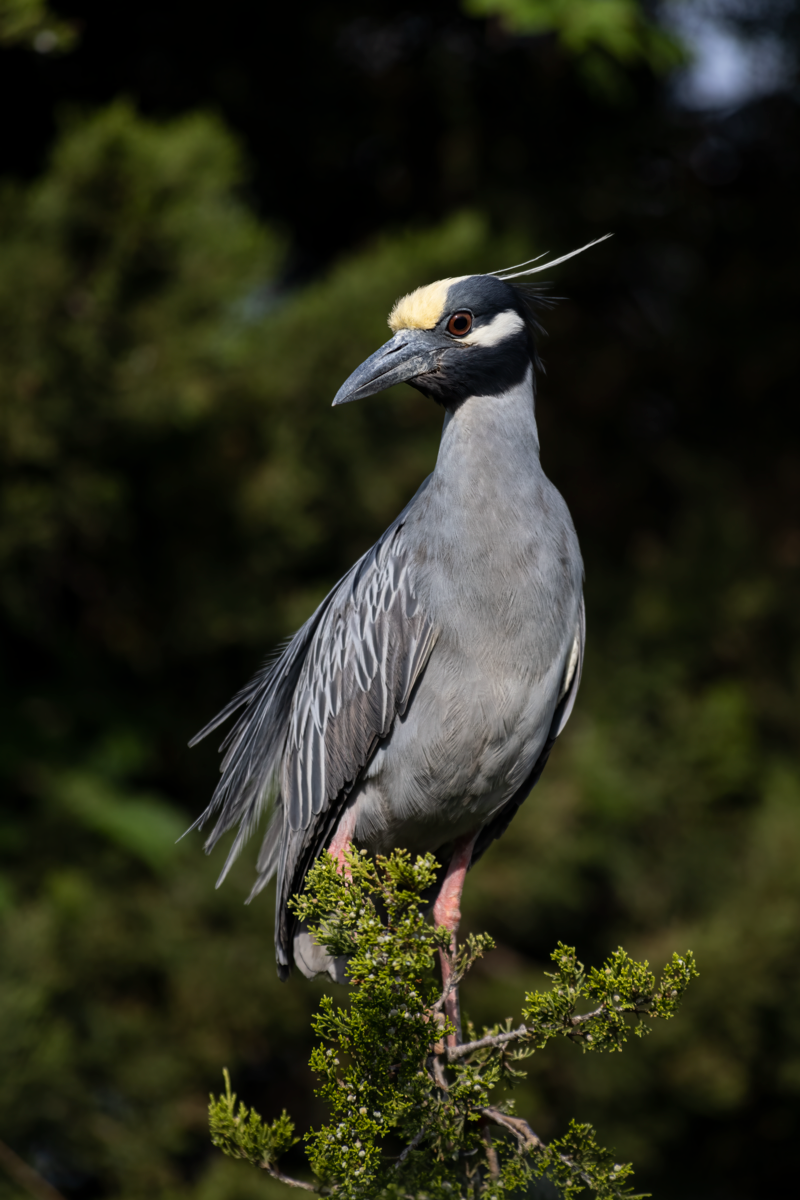
The Yellow-Crowned Night Heron is an interesting species of bird that is found in the Americas. It is one of two species of night heron that belong to the genus Nyctanassa.
The other species, the Black-Crowned Night Heron, is found across the world, while the Yellow-Crowned is only found in the Americas.
It is known by different names in different languages, for example, it is called the bureau violacé in French and the pedigree corona Clara in Spanish. The Yellow-Crowned Night Heron is a medium-sized species of heron that is typically found near wetlands, rivers, and lakes.
It has a greyish-blue coloration with yellow streaking on its back and a yellow crown on its head. Its main diet consists of small fish, frogs, insects, and crustaceans, which it catches by standing still in shallow water and waiting for prey to come near.
It has a loud, croaking call that is used to communicate with other herons and to ward off predators. The Yellow-Crowned Night Heron is a common sight in the Americas, where it is a protected species.
It is widely distributed across the continent, from southern Canada to the southernmost regions of South America. It can be seen in coastal areas, freshwater wetlands, and even in some urban parks.
Its population size is thought to be stable, although there is still a need for further research to ensure its continued survival.
| Kingdom | Animalia |
| Phylum | Chordata |
| Class | Aves |
| Order | Pelecaniformes |
| Family | Ardeidae |
| Genus | Nyctanassa |
| Species | N. violacea |
17. Snowy Egret
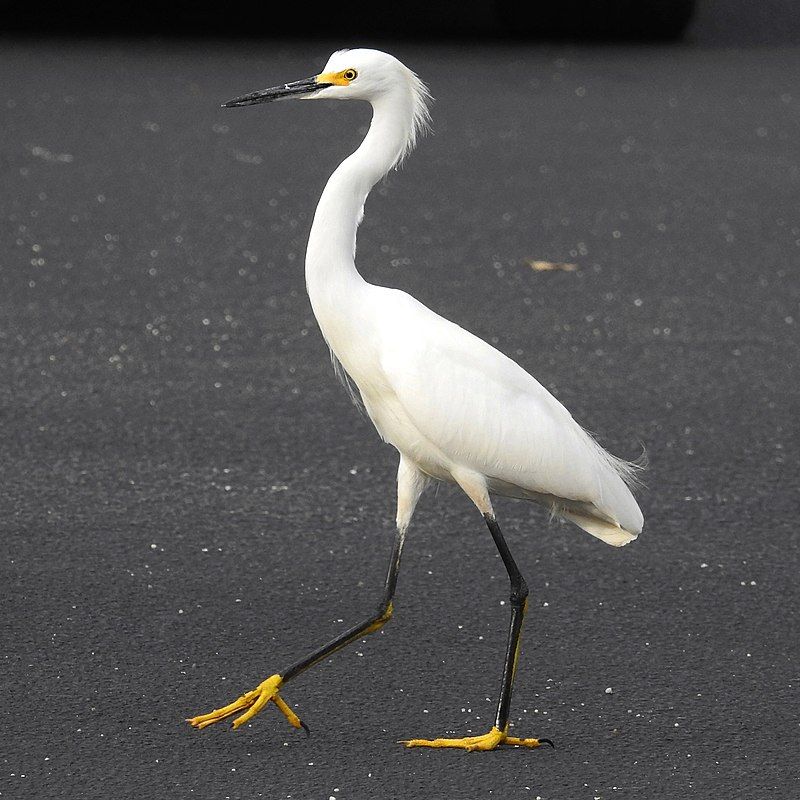
The snowy egret is a small white heron that can be found in many parts of the world. Its scientific name is Egretta thula.
The genus name of this species is derived from Provençal French for the little egret, aigrette, which itself is a diminutive of the French word for heron, aigron. The species named Thula is an interesting story.
It is an Araucano term, which is the language of the indigenous people of Chile, for the black-necked swan. However, this attribution was made in error by Chilean naturalist Juan Ignacio Molina back in 1782.
Despite the mistake, the name has remained in place, providing an interesting reminder of the history behind the snowy egret.
| Kingdom | Animalia |
| Phylum | Chordata |
| Class | Aves |
| Order | Pelecaniformes |
| Family | Ardeidae |
| Genus | Egretta |
| Species | E. thula |
18. Pileated Woodpecker
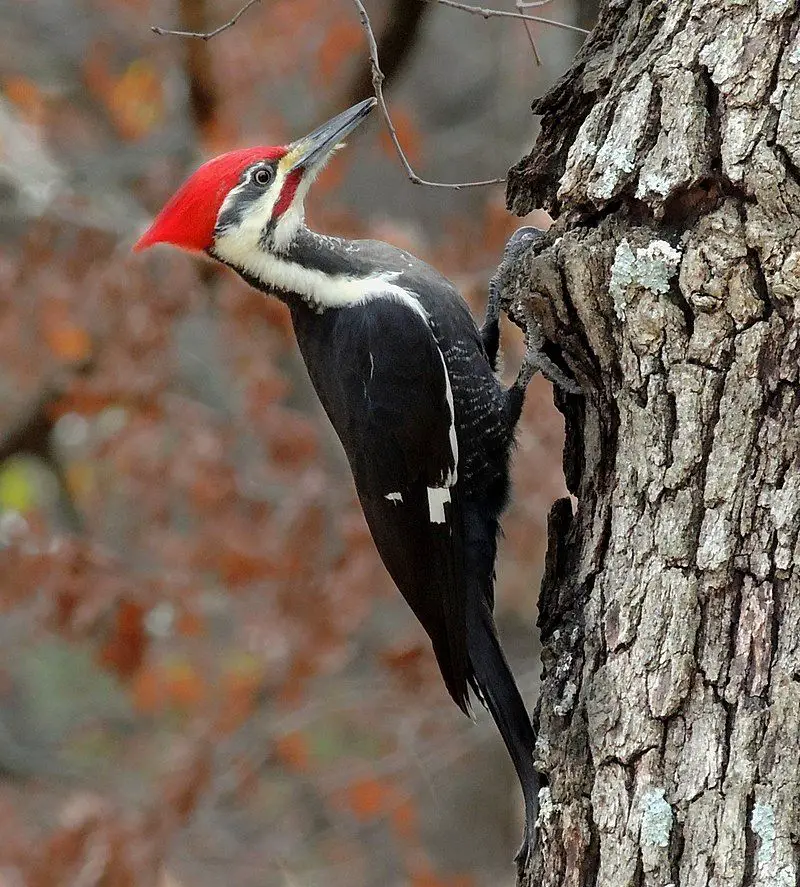
The pileated woodpecker is a large bird that is native to North America. It has a mostly black coloration, with some white, gray, and red markings.
The species is an insectivore, meaning it feeds primarily on insects, and it inhabits deciduous forests in eastern North America, the Great Lakes region, the boreal forests of Canada, and parts of the Pacific Coast.
It is one of the largest woodpeckers in North America, measuring up to sixteen inches in length. They are recognized by their red crest, black body, and white stripes on their wings.
They have a strong, sharp beak which they use to hammer holes into trees to search for food. The pileated woodpecker is an important part of many forests, as they help to keep insect populations in check, while also creating cavities in trees that provide nesting sites for other animals.
They also help to disperse the seeds of many trees and plants, which helps to promote the healthy growth of the forest. The pileated woodpecker has faced some threats in recent years, such as habitat loss due to deforestation, and competition with other species.
However, conservation efforts have been successful in protecting this species, and their numbers have been increasing in some areas.
| Kingdom | Animalia |
| Phylum | Chordata |
| Class | Aves |
| Order | Piciformes |
| Family | Picidae |
| Genus | Dryocopus |
| Species | D. pileatus |
19. Red-shouldered Hawk
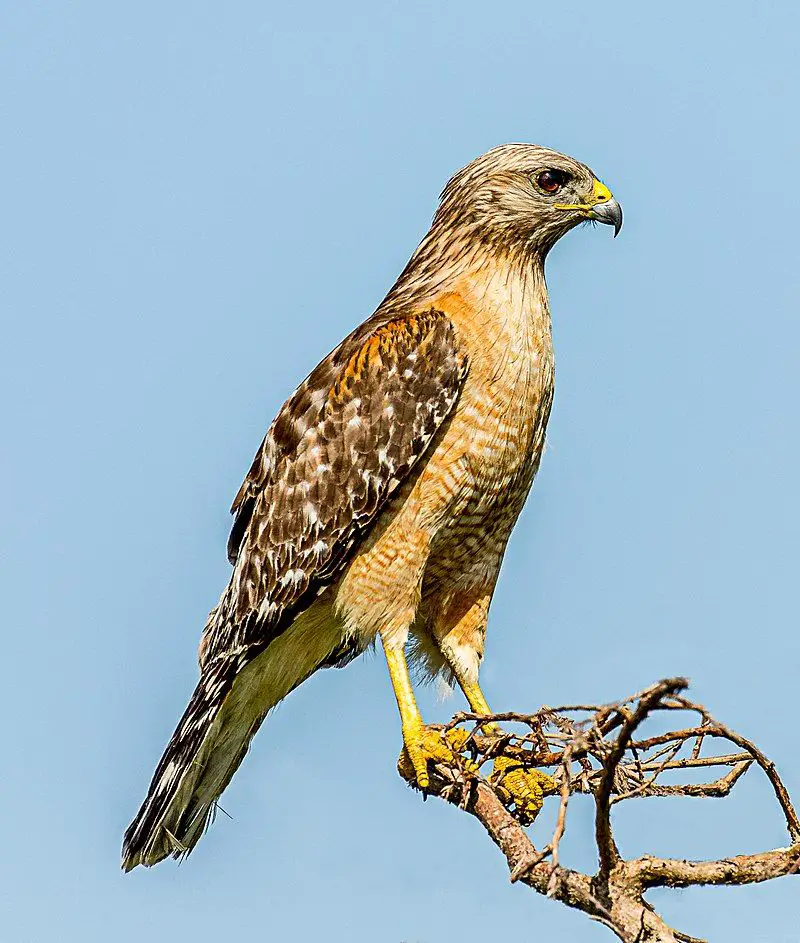
The red-shouldered hawk is a medium-sized buteo, a type of bird of prey. It is found in a wide range of habitats, from woodlands and swamps to suburban parks.
Its breeding range extends from eastern North America to the coast of California and from northern parts of Mexico to northeastern-central Mexico.
This bird species is a permanent resident in most of its range, although the northern birds migrate during the wintertime, mainly to central Mexico. The red-shouldered hawk is fairly common, and its population is stable and not threatened.
It feeds mainly on small mammals, reptiles, amphibians, and insects, which it captures by swooping down from a high perch. It also feeds on carrion and some fruit. The red-shouldered hawk is a solitary bird, except when it is breeding.
During breeding season, pairs of red-shouldered hawks can be seen in courtship displays, including aerial chases and vocalizations. The female will lay a clutch of one to five eggs, which are incubated for 28-31 days before hatching.
| Kingdom | Animalia |
| Phylum | Chordata |
| Class | Aves |
| Order | Accipitriformes |
| Family | Accipitridae |
| Genus | Buteo |
| Species | B. lineatus |
20. Great Horned Owl
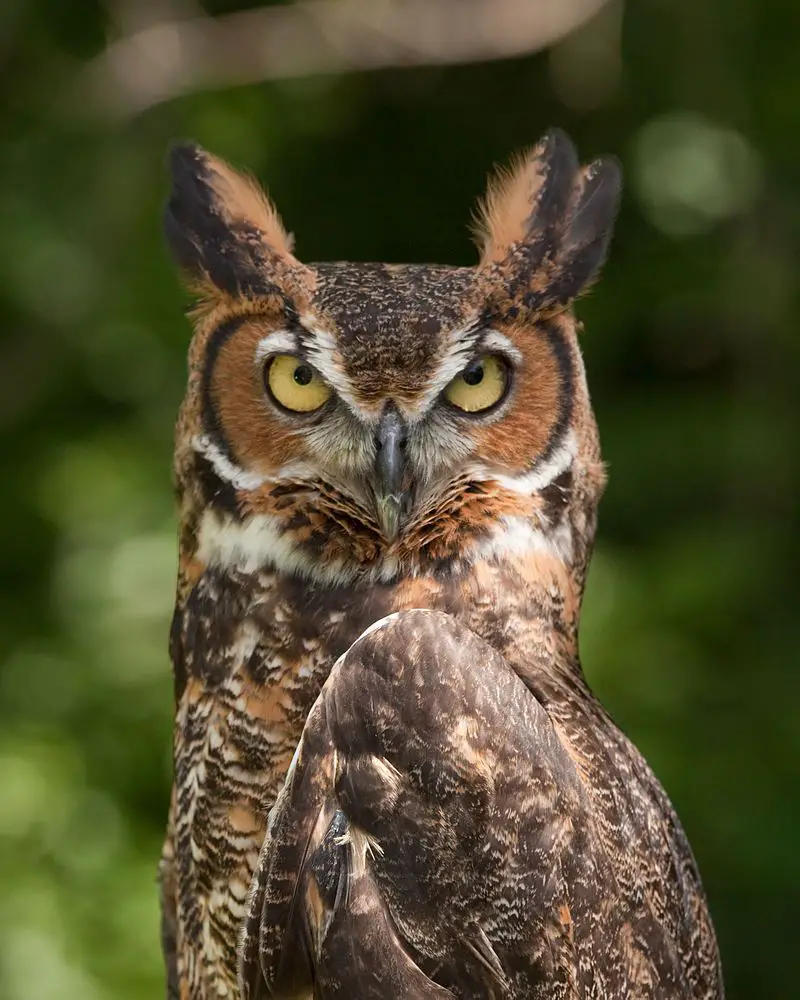
The great horned owl is a common species of owl found in a variety of habitats across the Americas. It is one of the largest species of owl, with a wingspan of up to 5 feet and a body length of up to 2 feet.
It is also known as the tiger owl or the hoot owl due to its distinctive hooting call. This owl is an extremely adaptable species, capable of inhabiting a wide range of habitats, from mountains and woodlands to deserts and even urban areas.
It is also the most widely distributed true owl in the Americas, from Alaska to South America. The great horned owl is a powerful hunter, and its diet consists mainly of small mammals such as rabbits and mice. It also feeds on birds, amphibians, reptiles, and even fish.
Its powerful talons and beak make it a formidable predator and it is even known to occasionally hunt for larger prey such as skunks and raccoons.
The great horned owl is a remarkable species that has been able to successfully adapt to a variety of environments in order to survive.
| Kingdom | Animalia |
| Phylum | Chordata |
| Class | Aves |
| Order | Strigiformes |
| Family | Strigidae |
| Genus | Bubo |
| Species | B. virginianus |
21. Woodpeckers
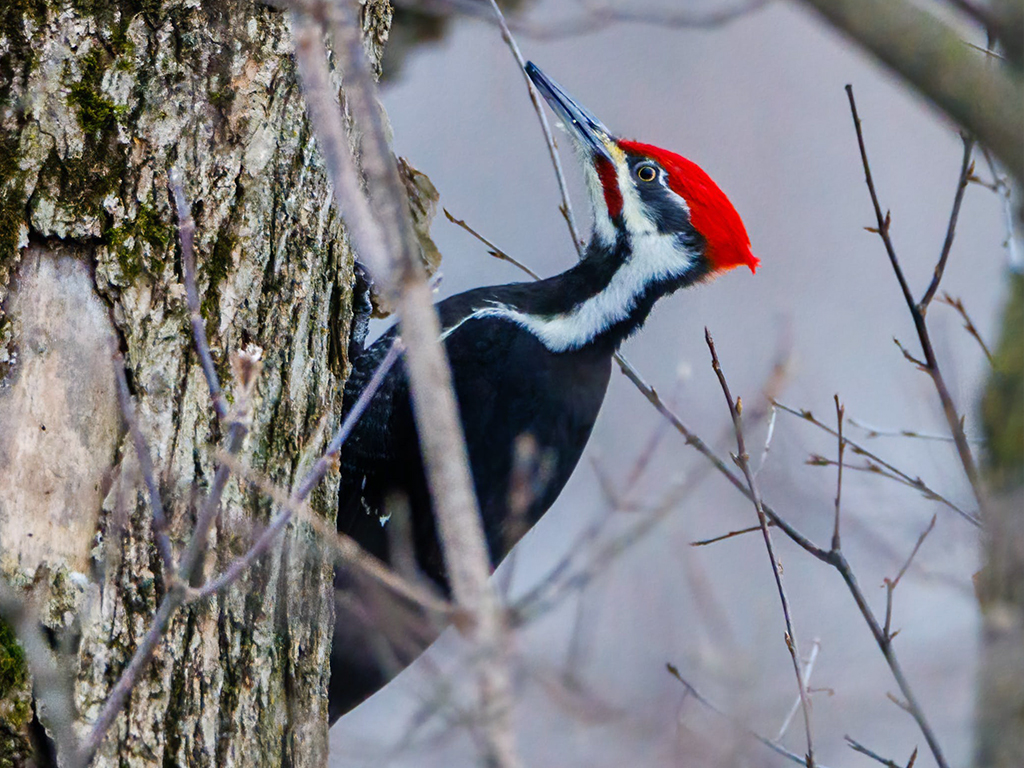
The family Picidae is composed of woodpeckers, piculets, wrynecks, and sapsuckers. These birds are found on virtually every continent on the planet, except for Australia, New Guinea, New Zealand, Madagascar, and the extreme polar regions.
The woodpecker is the most well-known member of the family and is characterized by its large, strong beak for drilling and tapping into trees. Piculets are small woodpeckers, and they tend to inhabit more tropical regions.
Wrynecks are medium-sized woodpeckers with distinctive wry necks, and they are found in Eurasia and Africa. Sapsuckers are medium-sized woodpeckers that feed on tree sap and are found in North and Central America.
All of these birds have a similar body shape, with a round head, short legs, and a long tail. They also tend to have a unique call that is specific to their species.
| Kingdom | Animalia |
| Phylum | Chordata |
| Class | Aves |
| Order | Piciformes |
| Family | Picidae |
22. Great Egret
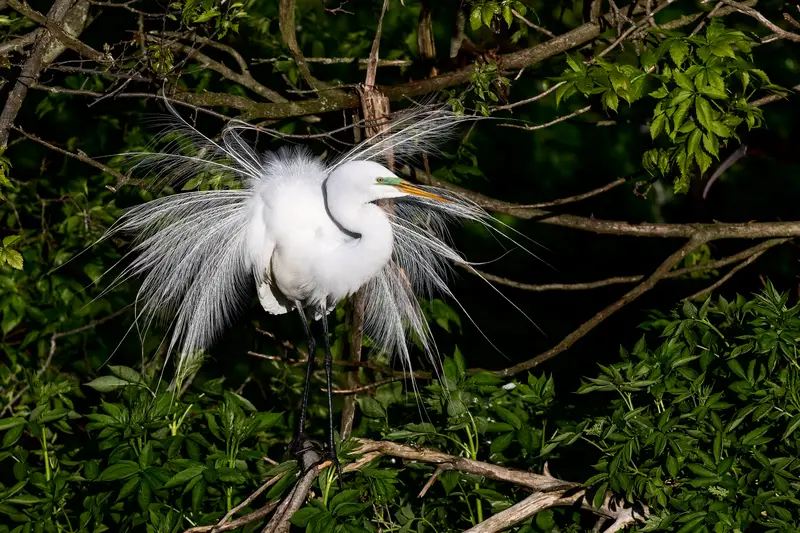
The great egret is a species of large white heron that is found all over the world. It is also known by various other names, such as the common egret, large egret, great white egret, and great white heron.
This species of heron is divided into four subspecies, which can be found in Asia, Africa, the Americas, and southern Europe. In recent years, the great egret has been expanding its range further north into Europe as well.
The great egret is a large bird, typically standing around three feet tall and having a wingspan of up to five feet. It is a beautiful bird with a white plumage, yellow beak, and black legs.
Its white feathers are used by many cultures in traditional ceremonies and for decorations. It is a very adaptable species and can be found in a variety of habitats, including wetlands, marshes, rivers, lakes, and even grasslands.
The great egret is an opportunistic feeder, meaning that it will eat anything available. It typically hunts for fish, frogs, crabs, invertebrates, and even small mammals.
It is a visually oriented-hunter and will often wait patiently for prey to come close before striking with its long, sharp beak. The great egret is an important part of many ecosystems, as it helps to keep insect and fish populations in check.
It is also an important symbol of nature in many cultures, and it is protected by international conservation laws. Without the great egret, many wetlands and other natural habitats would suffer from an imbalance in their ecosystems.
| Kingdom | Animalia |
| Phylum | Chordata |
| Class | Aves |
| Order | Pelecaniformes |
| Family | Ardeidae |
| Genus | Ardea |
| Species | A. alba |
23. Spoonbill
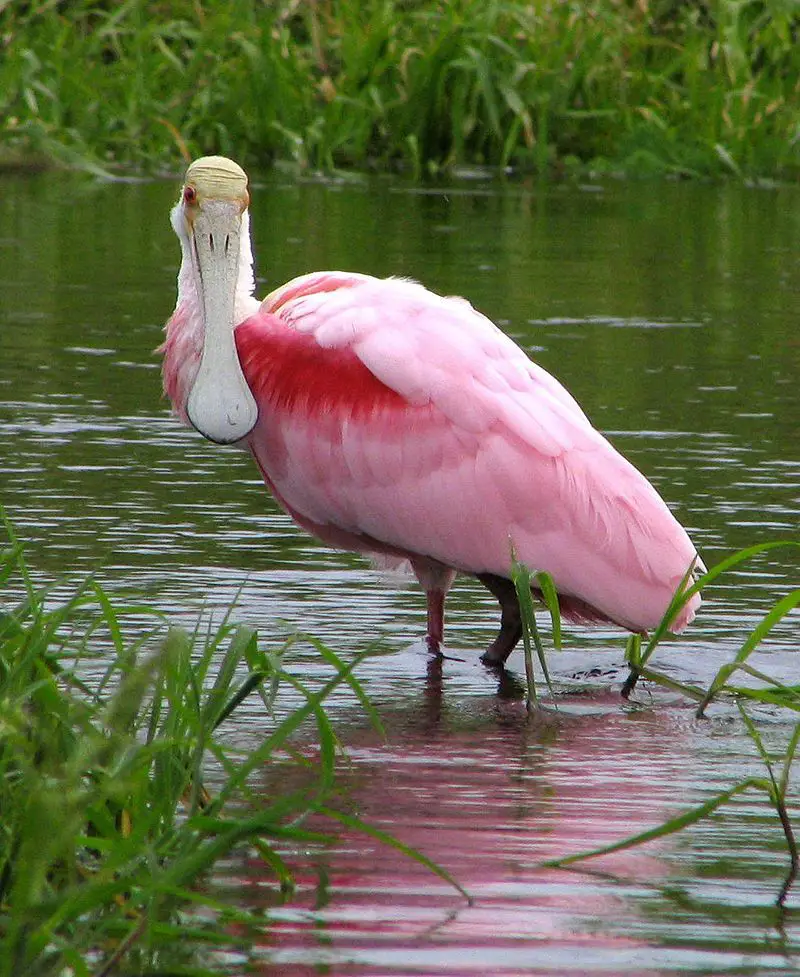
Spoonbills are a type of wading bird belonging to the genus Platalea. They are found on all continents except Antarctica, which means they have a global distribution. The name Platalea is derived from Ancient Greek and it means “broad”.
This refers to the unique shape of the bill of the spoonbill, which is wide and flat. This feature helps them to filter small organisms from the water to feed.
Spoonbills are usually large birds and have long legs, which enable them to wade through shallow waters.
They tend to live in wetlands and coastal areas, as these habitats provide them with food and shelter.
| Kingdom | Animalia |
| Phylum | Chordata |
| Class | Aves |
| Order | Pelecaniformes |
| Family | Threskiornithidae |
| Genus | Platalea |
Conclusion
Birds in Tampa are an important part of the local ecosystem. They provide food for other animals, create habitats, and bring beauty to the area. Birds in Tampa are a diverse group, with many species to be found in the area.
With proper care and protection, these birds can continue to thrive and provide the many benefits they bring to the area.